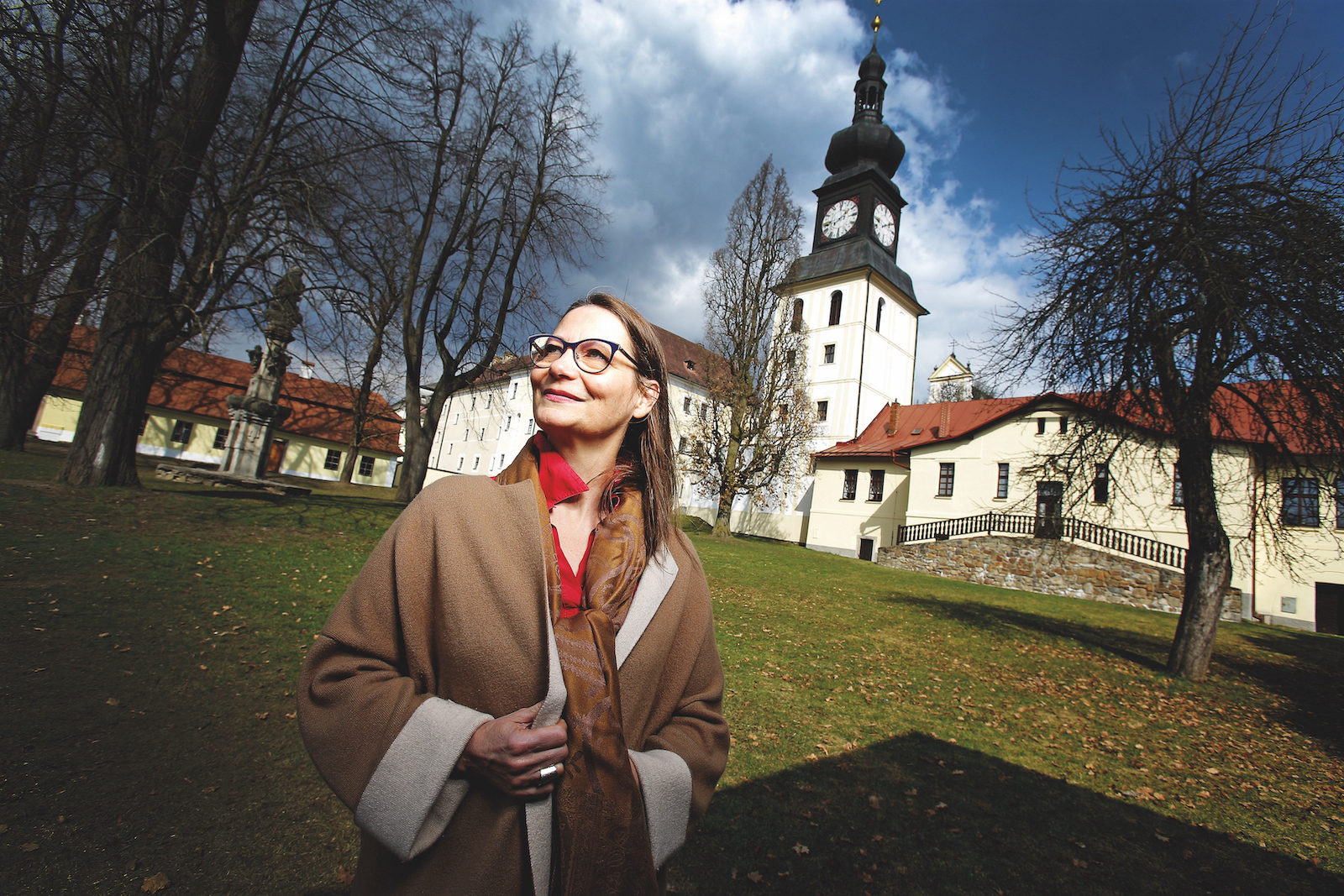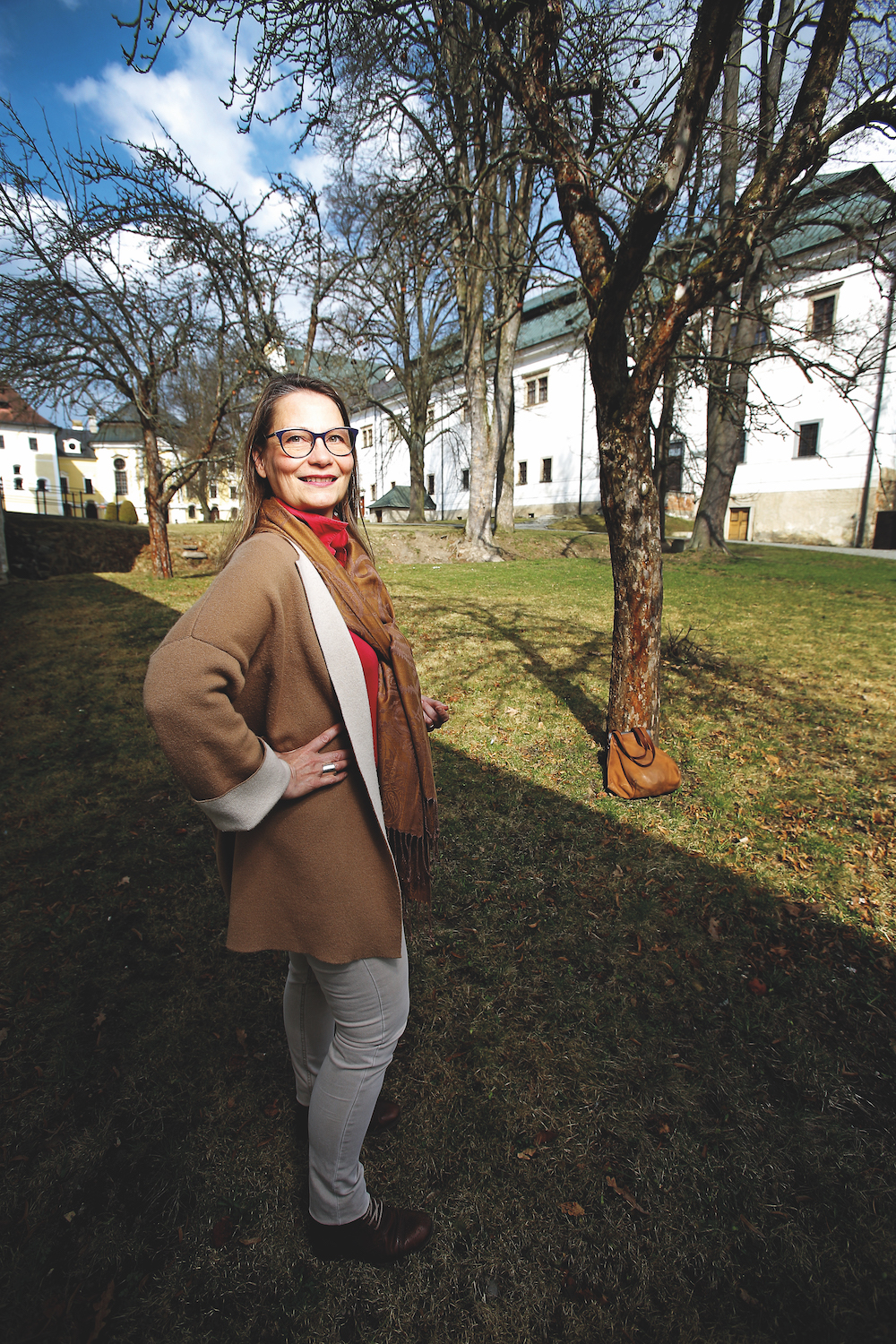“The ephemeral nature of dance forces us to be in the here and now”

Marie Kinsky, Dancer and Founder of KoresponDance International Festival
Text: Martina Hošková and M. Zisso; Photo: archive
“I come from the world of history and dance, which I studied at the Sorbonne University. I have pushed dance further with various training and rich professional experiences. I am amazed at the fruitfulness of this double approach, which led me to think of unusual structures, especially for my adopted country since 1997, the Czech Republic” – these words are but a brief introduction to the creative and passionate world of Marie Kinsky, dancer and founder of the KoresponDance International Festival of contemporary movement arts.
What is going on in contemporary dance today? What attracts the fans?
For the 25 years that I have been watching the development of Czech contemporary dance, I have been fascinated by the richness of the directions it takes, both in terms of the intimate and topical subjects it deals with and the formats it uses – performances, installations, gallery events, and interaction with the public. Sometimes it is scary: what is it about? But, if the spectator lets his sensations, emotions, and imagination work, then he is in tune with what the artists are doing.
Dance raises the question of the embodiment of ideas, of reflections, of ourselves. For example, when a dancer falls. In the personal experience of the audience, the fall may be associated with memories of danger (illness, death), or shame (dirtiness, incompetence). Or, on the contrary, the audience might see it as a rebound. And combine all of these (different perceptions) at will. These experiences will be linked to the artist’s, to the factual qualities (tenderness, brutality, etc.) that he puts into them, to the context in which this fall takes place, and thus form a reading of himself and of these possibilities.
A “know thyself”, to connect with and understand the other. It is so powerful in its simplicity that, through dance, it is possible to understand the essence of a foreign culture, or to become aware of social facts that do not emerge from analysis.
The ephemeral nature of dance forces us to be in the here and now, in the moment of perception, of thought in motion and of action. Unlike social networks, dance does not demand immediate emotional reactivity, but a sensitive reflection that is cultivated and constructed.
You founded the KoresponDance – an international festival of contemporary dance, movement theatre, and new circus. Tell us more about your vision.
KoresponDance is an international festival that combines current forms of movement arts: dance, street dance, new circus, and movement theatre. The programme is varied, does not compromise on the quality of the invited artists, and aims to give each visitor a gift: at least one magical memory. Each year, a theme linked to local life is chosen in order to give cohesion to the programme.
It is a festival that invites shows that link with the place, and engages the inhabitants to participate in the programme alongside professional artists. Organising this festival in the unique Žďár Monastery Castle in the summer is a gift to all, including artists and audiences. Rediscovering places in the city is exciting too.
KoresponDance is for everyone: children, families, and professionals. No education or knowledge is necessary. The mornings are joyful, with the artists giving workshops to those who wish to attend, and the afternoons and evenings are full of performances and discussions.
It’s a time of joyful effervescence that I love.

Marie Kinsky, Dancer and Founder of KoresponDance International Festival
This year, we are looking forward to what is already the 11th edition of the festival. What can we expect?
This year, KoresponDance celebrates the 300th anniversary of a genius architect who left many buildings in Žďár, Santini. He is an emblematic figure for the region, and our citizens are rightly proud of him. In Prague, the festival celebrates the 100th anniversary of the architect Prager, whose achievements are the opposite of those of Santini. Buildings composing a landscape and seeking the harmony of contrasts will thus be confronted with a radical architecture of a sculptor, curves against right angles, stone against steel and glass.
The invited performances question the underlying ideas of these artists, and transform them. A beautiful dialogue between the fluid spirals of Yin Zero’s new circus and the harmonious vitality of The Requiem’s dance of Beatrice Massin. A game of horizontal- vertical variations of walls and doors in Exit, and an anti-gravitational building with Eliška Brtnická, who dreams of flight and purity. The play of number symbols that the jugglers of Tall Tales reveal to us from the architecture of Santini, and the enthusiastic energy of our extraordinary street dancers Ruben Chi and Kristian Mensa… No less than 17 different shows from all over Europe.
Can you name a few more artists who are coming?
I am delighted to see Rezonance, the production we initiated between the baroque orchestra, Collegium 1704, and Beatrice Massin’s contemporary baroque dance company, in posthumous partnership with 27 Santini and his Green Hill Chapel (of such beauty that it is a Unesco World Heritage Site). An immersive and exclusive event on all levels…
I can’t wait to hear the children’s delight at Exit, a show full of the unexpected, or at Manolo Alcantaras’s strange live constructions. I love the energy and the collaborative spirit of the street dance battles of very inspiring youth.
What audience is your festival intended for?
KoresponDance aims to appeal to all ages and all social and cultural backgrounds. The festival offers short and varied outdoor performances, which makes it easier for families with children to attend. Young people have specific programmes, to which other generations are also invited. Some of the acclaimed performances in Europe are presented in public spaces, and reach out to those who do not think of culture as being for them.
The festival has no language barriers, and programme documents, discussions, workshops etc. are moderated in both English and Czech. KoresponDance wants to be a festival accessible to all and for all.
How has KoresponDance evolved over time?
KoresponDance started with a timid one-day trial in 2013, and thanks to a very active vice-mayor, has already collected 800 tickets for performances. The programme is now 5 days long: one in Prague, on 27th June in CAMP – Center for Architecture and Metropolitan Planning, on 13th July at the Republic Square in the centre of Žďár, and from 14th to 16th July at Žďár Castle.
The line of programming has remained the same, following the extraordinary qualitative development of Czech dance, and has expanded to several continents, enriched through its projects with communities, as well as year-round programs to ensure continuity. Our peak attendance for 4 days was 7,500… the festival now belongs to its audience, and is happy to welcome more.
What are the festival’s biggest challenges?
The challenge in the cultural sector is still the financing. (If you have) solid institutional support from the Ministry of Culture, as well as some sponsors who remain loyal over several years, then you can ensure continuity. Otherwise, every year the teams and I feel like we have to start again at bonjour (as we say in French). To make a beautiful event in the Czech region is a real financial challenge. But the festival production teams are magicians, and with resilience, and an astronomical amount of work, they manage year after year to offer the best possible (experience) to the public.
Speaking of money – not a long time ago, your Zámek Žďár association celebrated great success when it received an extraordinary subsidy to build a creative centre at the Žďár nad Sázavou castle. Who and what would the centre serve?
This creation centre had long been an elusive goal, until, thanks to the COVID-19 pandemic, everything changed.
The European Union, unlike the states that saved their economies and populations by deleveraging, wanted to take the long view. It therefore asked each state to make a strategy for the development and renovation of their cultural systems, which it could finance. The Czech Republic’s choices were threefold: creativity by combining culture with industry and education, the development of the regions by adding modern design structures to the existing system, and the status of artists. Within this framework, we can add a masterpiece to the cultural organization, dreamed of for Žďár since 2011.
The centre that we will be able to open in 2025 is conceived as a creative hub for professionals in the performing arts, the creative industry (architecture, scenography, film, etc.), creative pedagogy, and science (universities, etc.). It is a residence-type research space, outside of time and daily constraints, designated to allow teams to focus on new concepts, on the unexpected.
It aims to allow encounters and encourage interdisciplinarity. To let the different types of intelligence recognize each other and move forward together. The programme will consist of several teams invited at the same time, with many organised or unorganised opportunities to meet.
The centre is also intended for the regional public, who will have the opportunity to meet our guests (from all cultural backgrounds) at the end of their stay, and exchange ideas with them.
A cultural programme, including the KoresponDance festival, will be offered, as well as temporary exhibitions.
Many of these activities already exist on-site. But the programme will be more ambitious, conducted in better synergy, with a greater number of partners (we have 22 letters of intent signed, including several international networks), and be more intense and visible. It will be able to showcase a good image of the dynamics of the region. 29 The new feature will be the opening of the magnificent reconstruction of the former convent, designed by Gilles Marty of INCA… a balancing act between respecting the genius of the place and its history, and a radically contemporary, luminous, and warm signature. INCA has already created the new generation museum for the site, in the former monastery brewery. This is also a step forward, building on the continuing cultural revitalization of Žďár Castle.
It seems that you have a lot to do in the coming years…
For the moment, the vision is to give life to the creation centre, and to increase the synergy between the Zámek Žďár museum and its activities. This is on top of the activities of the SE.S.TA choreographic development centre, and the creation centre, without forgetting the ecological activities that my husband is developing with the sustainable exploitation of the forests and fishponds… an endless source of inspiration and respect.
The objective is also to absorb the investment phases, and to reach a viable economic cruising speed in this new configuration. Pushing the public authorities to collaborate continuously, involving more local partners – this is also a work of synergy. There is a lot of work to be done, but there is a lot of good energy around.


[…] vystoupení, jak připomíná jeho ředitelka a dramaturgyně Marie Kinsky i v úvodním slovu letošního festivalového tištěného […]